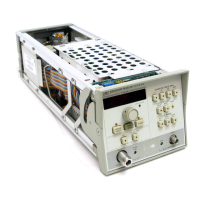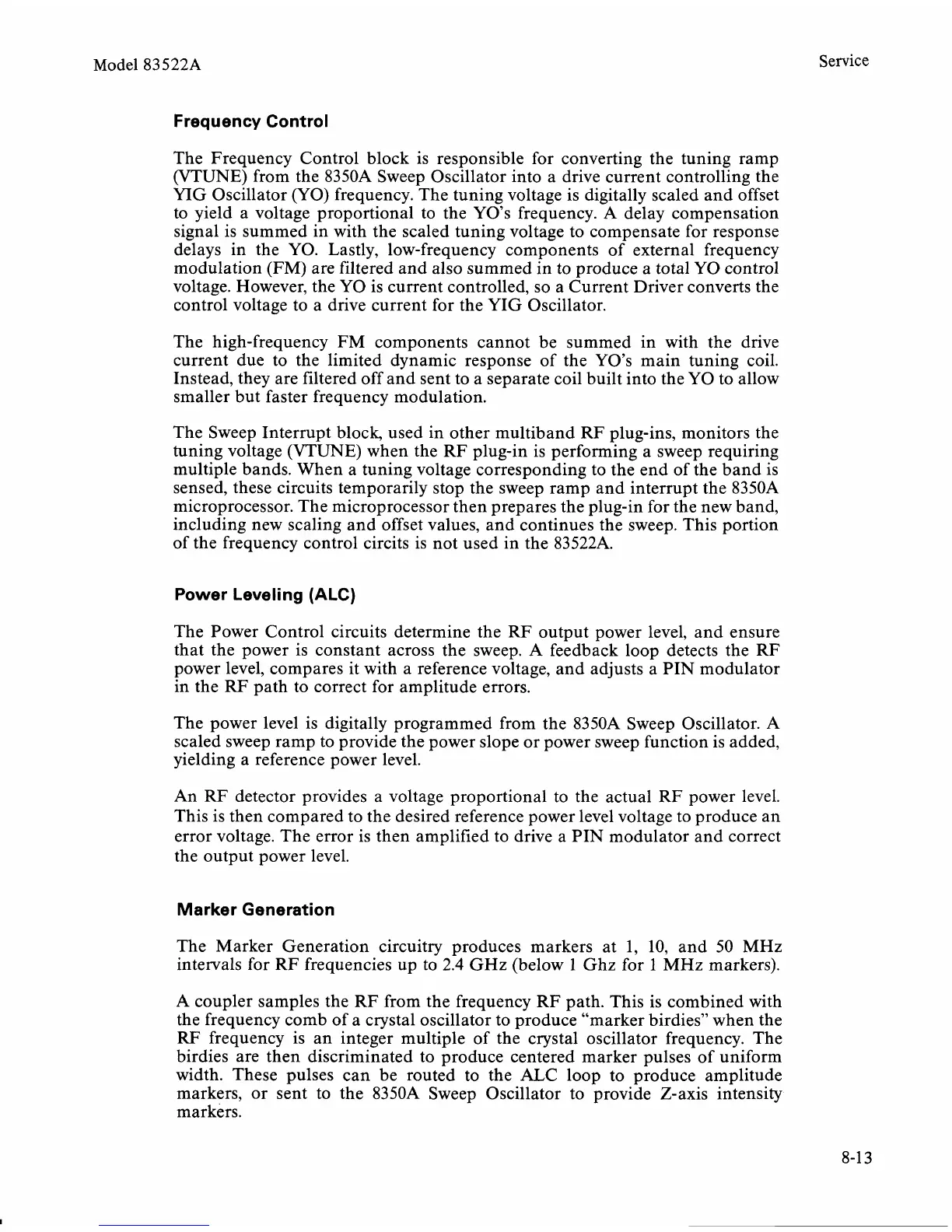Model
83522A
Frequency Control
Service
The Frequency Control block is responsible for converting the tuning ramp
(VTUNE) from the
8350A
Sweep Oscillator into a drive current controlling the
YIG Oscillator (YO) frequency. The tuning voltage is digitally scaled and offset
to yield a voltage proportional to the
YO'S frequency.
A
delay compensation
signal is summed in with the scaled tuning voltage to compensate for response
delays in the YO. Lastly, low-frequency components of external frequency
modulation (FM) are filtered and also summed in to produce a total YO control
voltage. However, the YO is current controlled, so a Current Driver converts the
control voltage to a drive current for the YIG Oscillator.
The high-frequency FM components cannot be summed in with the drive
current due to the limited dynamic response of the
YO'S main tuning coil.
Instead, they are filtered off and sent to a separate coil built into the YO to allow
smaller but faster frequency modulation.
The Sweep Interrupt block, used in other multiband RF plug-ins, monitors the
tuning voltage (VTUNE) when the RF plug-in is performing a sweep requiring
multiple bands. When a tuning voltage corresponding to the end of the band is
sensed, these circuits temporarily stop the sweep ramp and interrupt the
8350A
microprocessor. The microprocessor then prepares the plug-in for the new band,
including new scaling and offset values, and continues the sweep. This portion
of the frequency control circits is not used in the
83522A.
Power Leveling (ALC)
The Power Control circuits determine the RF output power level, and ensure
that the power is constant across the sweep.
A
feedback loop detects the RF
power level, compares it with a reference voltage, and adjusts a PIN modulator
in the
RF
path to correct for amplitude errors.
The power level is digitally programmed from the
8350A
Sweep Oscillator.
A
scaled sweep ramp to provide the power slope or power sweep function is added,
yielding a reference power level.
An
RF detector provides a voltage proportional to the actual RF power level.
This is then compared to the desired reference power level voltage to produce an
error voltage. The error is then amplified to drive a PIN modulator and correct
the output power level.
Marker Generation
The Marker Generation circuitry produces markers at
1,
10,
and
50
MHz
intervals for RF frequencies up to
2.4
GHz
(below 1
Ghz
for
1
MHz
markers).
A
coupler samples the RF from the frequency RF path. This is combined with
the frequency comb of a crystal oscillator to produce "marker birdies" when the
RF
frequency is an integer multiple of the crystal oscillator frequency. The
birdies are then discriminated to produce centered marker pulses of uniform
width. These pulses can be routed to the
ALC loop to produce amplitude
markers, or sent to the
8350A
Sweep Oscillator to provide Z-axis intensity
markers.

